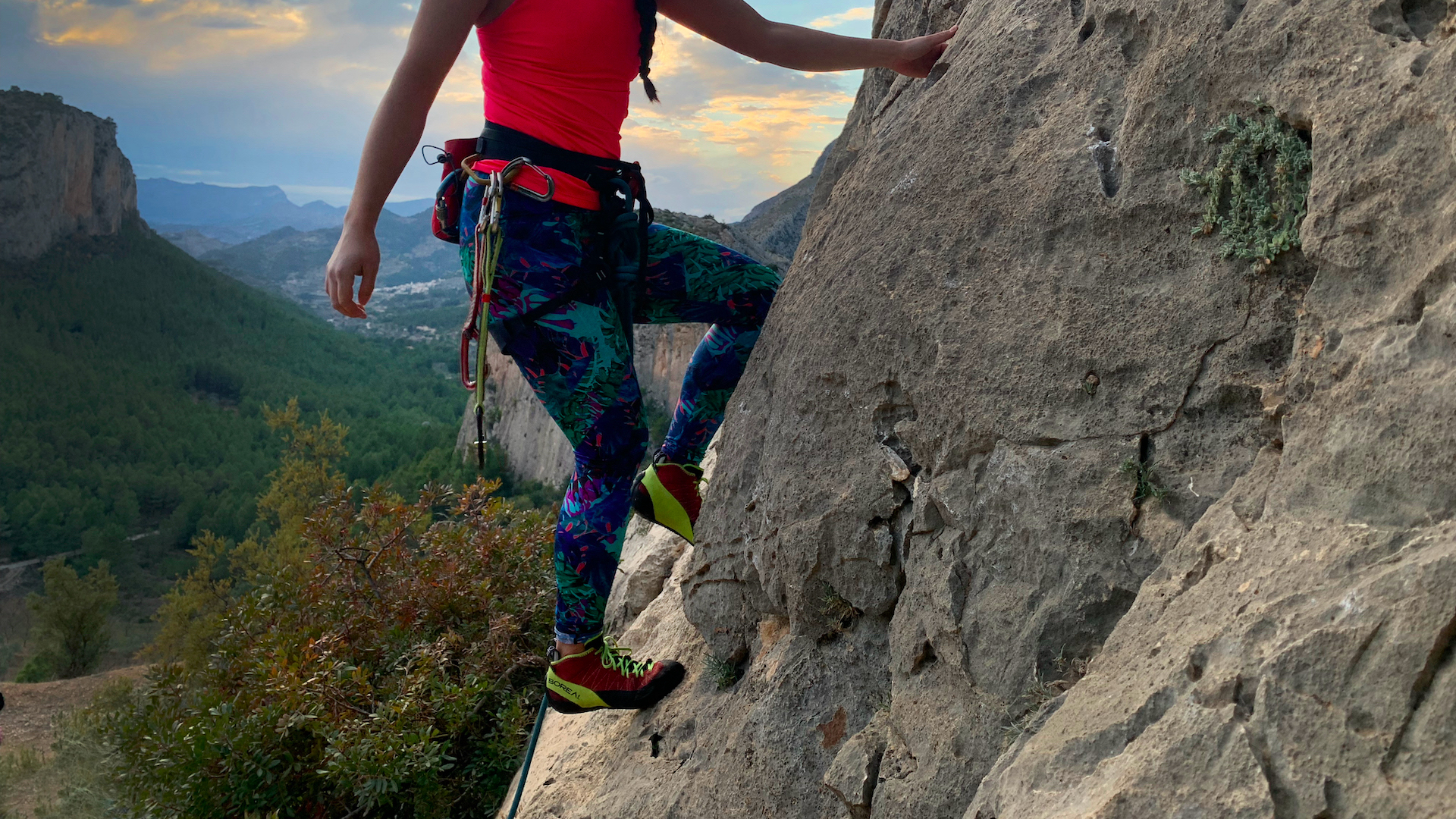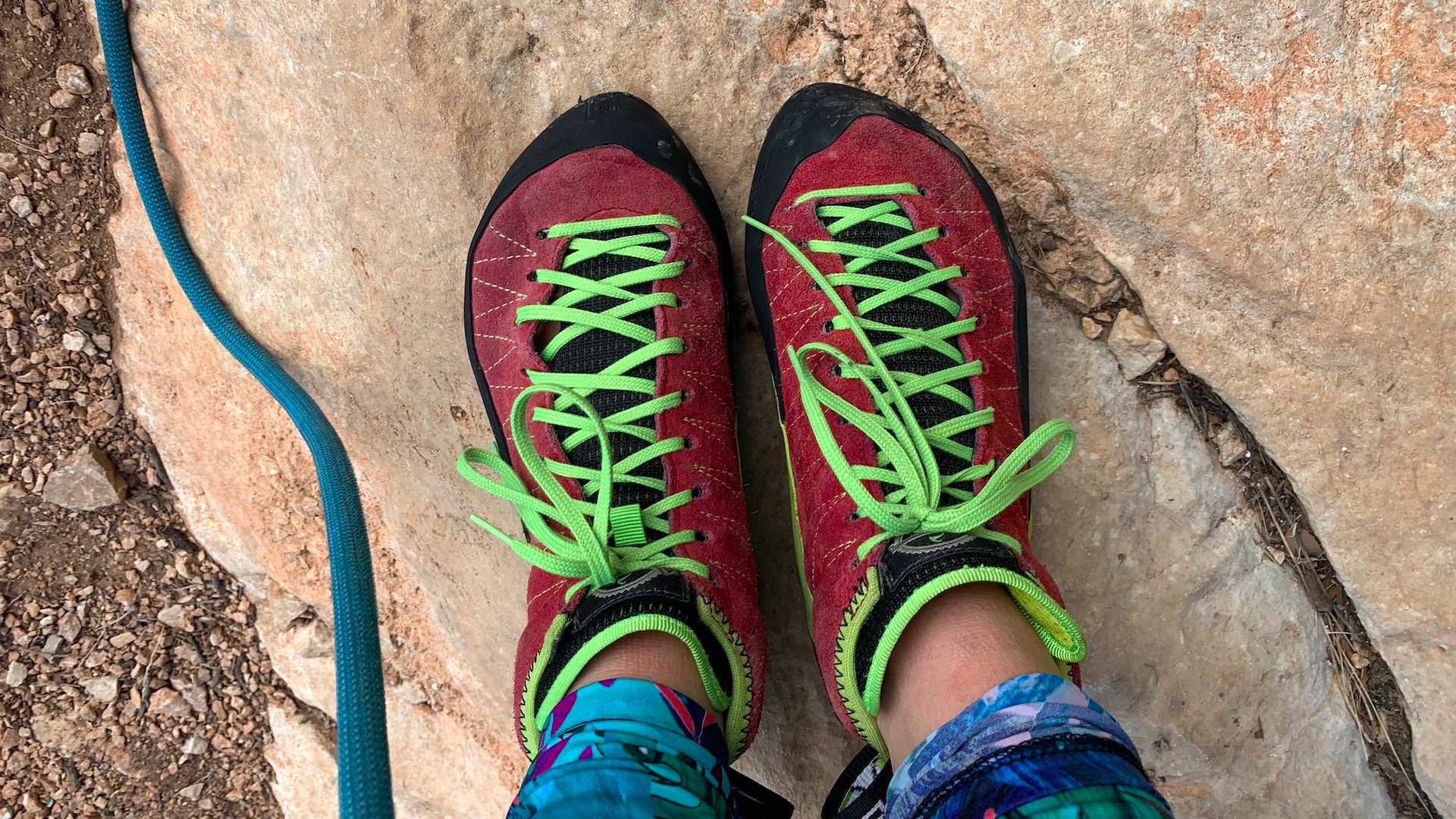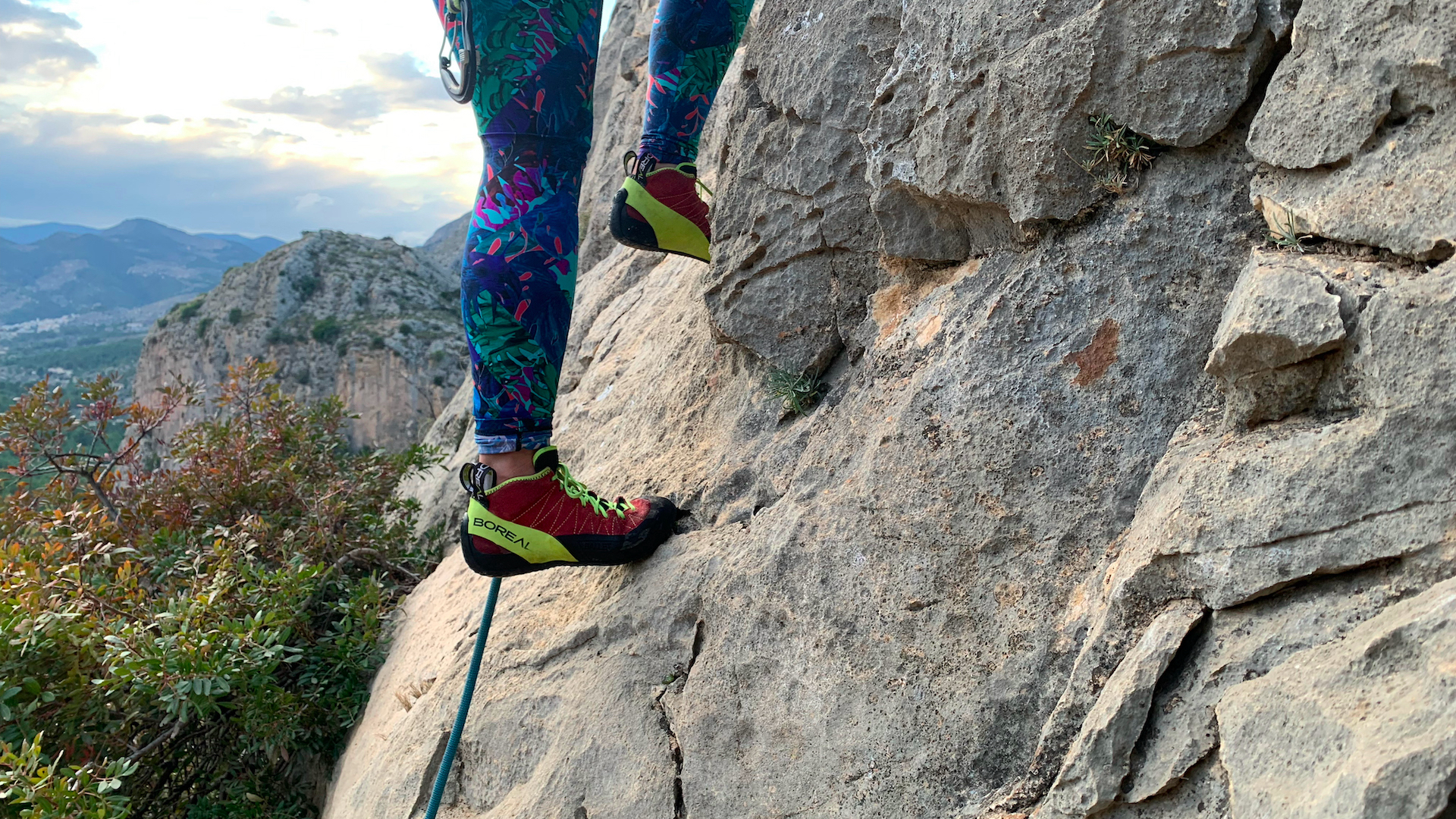Advnture Verdict
Distinctive-looking retro climbing shoes with features that make them perfect for longer routes and crack climbing.
Pros
- +
Durable
- +
Low-volume toe
- +
Cushioned ankle support
Cons
- -
Rubber doesn’t feel super responsive
- -
Heavy
You can trust Advnture
Boreal Ballet: first impressions
The Boreal Ballets have been optimized for the demands of trad and big wall climbing, offering a stiff midsole for support and a high-cut collar for ankle protection.
The last shape features a low-volume toe with a mild downturn and a more symmetrical fit for increased versatility and comfort. Durable and sticky Zenith rubber is used on the outsole.
If you’re after a climbing shoe that has an eye on performance, this shoe is well suited for bouldering, multi-pitches and indoor climbing. The split-leather upper features a lace closure for optimum fit, and boasts an extra rubber toe patch and ankle protection for crack climbing.
• RRP: £120 (UK) / €90 (EU)
• Weight (per shoe): 155g / 6oz
• Lining: None
• Outsole: Boreal Zenith Pro outsole. 4–4.5mm thickness
• Upper: Split leather
• Colors: Red
• Compatibility: Outdoor climbing, including multi-pitch routes and crack climbing

Boreal Ballet: on the crag
The Boreal Ballets are a bit like a pair of tweed trousers that a family friend who knows you like climbing passes on to you. Sure, their old-fashioned looks shouldn’t be judged at first glance, because, as everyone knows, they’re made out of an abrasive material that would help with a lot of British climbing – thrutching, wiggling around in cracks, etc. But there aren’t exactly hordes of climbers rocking up to the crags wearing britches right now.
Similarly, with the Boreal Ballets, there are a couple of features that are lifted from past rock shoes, and with the very bright lacing against red leather, they certainly have a retro feel to them that sets them apart from other climbing shoes out there.
Boreal is a brand that has been synonymous with modern rock climbing for decades. They invented sticky rubber with the Firé rock shoe in 1982, causing rock climbing standards to leap upwards almost overnight. Nowadays, all Boreal approach shoes, climbing shoes and mountaineering boots continue to be made in their factory in Villena, a short stone’s throw away from the crags of Marin and Sax in Costa Blanca, so it felt apt to test these shoes on Spanish limestone and see how they fared. It’s not too uncommon here to find a crag where climbers all rock up in their Boreal leather shoes.
Breathability
The Boreal Ballets certainly have a lot of appeal as a versatile, long-route shoe. Not only are they made from leather, which will help with the product’s long-term durability, they also allow the foot to breathe, thanks to the mesh tongue with tiny perforations to allow moisture to pass through. The lack of a liner feels like something is slightly amiss, but nevertheless my feet didn’t feel too hot when I was wearing them in warm, sunny conditions.
All the latest inspiration, tips and guides to help you plan your next Advnture!
Looks and features
Not ones to blend in, Boreal Ballet climbing shoes certainly catch the eye – bright red leather combines with a chartreuse green lace and back rand. A chunky, reinforced heel with ridges on the ankle is designed to encourage grip on tricky heel hooks.
On the soles of the shoes is raised ridging that spans horizontally, and a circular icon which conceals a thicker piece of rubber for extra shock absorbency. They employ flat lacing, which held OK but didn’t quite have as much surface area as the Adidas NIADs and did require re-fastening to ensure a tighter fit.

Size
Boreal Ballets were ideal when I dropped a half size – or even a full size – smaller than my usual trainer size. They were a little bit too small at size 38 – so I went with size 38.5, which was the half size smaller. As the Boreal Ballets were bought with long routes in mind, I didn’t mind that they were a tad bigger, as it allowed my feet to get into the shoe while wearing a thin liner sock. However, there is a much wider toe box at the front, where the space was much more noticeable. (See also: How should rock climbing shoes fit? Busting the ‘no pain no gain’ myth.)
Performance
Long routes require different techniques to short powerful boulder moves, which is why the Boreal Ballets are designed with a stiff midsole, which provides support rather than straining calf muscles. They also have a noticeably higher cut that curves around the ankle for a high level of ankle protection. The last shape features a low volume toe, mild downturn and a more symmetrical fit for increased versatility and comfort, which means it can feel a bit “baggy” at the front for those who prefer a narrower, more precision fit.
Boreal use a Zenith Pro rubber on the soles of the Ballets, which it claims is super sticky. It does, however, require you to wear them in, and weight your feet onto the shoe so the rubber attracts a bit more friction. It’s worth remembering that once the shoes are cleaned (a quick blob of spittle should do it, though other methods of cleaning rock climbing shoes are available) the “grip” of the shoes suddenly feel like it's increased. It’s certainly a different type of rubber to the Vibram XS Grip.
Finally, you’re going to want to consider the Boreal Ballets if you’re an avid crack climber, thanks to their additional ankle support (in the form of cushions that provide support either side of the bone, like tiny bumpers) and rubber reinforcements.

The anti-deformation midsole meant my feet felt well supported, easily enough to take the impact of sticking my feet into a crack. I was also impressed with the lacing, which is threaded into a leather panel (on the underside of the shoe), proving that Boreal have considered the impact of constantly tying and untying laces. The eyelet holes are circular, which would otherwise “pull” on the leather, but the addition of this leather strip adds extra longevity to the product.
The 4-4.5mm thick rubber outsole certainly adds extra protection for the feet, while an extra rubber patch near the big toe provides additional support for the front of your feet, showing that Boreal are thinking of its crack climbing customers who may be using all aspects of the shoe to help them progress upwards.
The Boreal Ballets aren’t for everyone, mainly because they’re nearly double the weight of some of the other shoes out there. But, should you be looking for a shoe that combines comfort and performance – and you don’t mind persisting with the concerns around “slippery rubber” – they are certainly a distinctive shoe that offers the wearer greater ankle support on longer routes in order to stop feet from getting tired.
A former brand ambassador for Merrell and current Ordnance Survey #GetOutside Champion, Jessie Leong’s lifelong outdoor odyssey began with Duke of Edinburgh’s Award walks in the Peak District. This segued into long hill hikes in the Yorkshire Dales, multi-day treks in the Lake District, scrambles in North Wales and adventures scaling alpine pinnacles. When not walking, she can be found rock climbing, wild swimming, cycling, photographing, filmmaking, writing and modelling. Jessie’s most recent claim to fame is playing a Miss World contestant in the 2020 feature film Misbehaviour.


